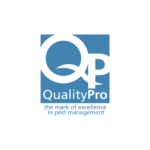Why Does The United States Contain An Unusually High Number Of Invasive Termites?
Within the last century, six non-native termites have established an invasive presence within the state of Florida. This makes the state of Florida home to the greatest number of invasive termites when compared to all other US states, followed closely by Hawaii with five invasive termite species established. The manner in which these non-native termites are arriving in coastal areas of the US is no mystery, as termite infestations have been found on many shipping vessels that travel from Asia to the US. Studies have also described several infestations of exotic termites on seafaring yachts, and the Florida harbors where they are docked. While it may seem impossible to prevent exotic termites from becoming established in states like Florida and Hawaii, it is worth noting that only one single non-native termite species has managed to establish an invasive presence in Australia. Considering that Australia is located within close proximity to the Asian countries where many invasive termites originate, one would think that Australia would be home to a greater number of invasive termites than America, but this is not the case. Many experts believe that this is due to Australia’s superior strategies for preventing exotic termites from infiltrating the country via ports.
Australia’s population is slightly higher than Florida’s and the climate in both regions is well suited for the survival of termites. Australia also has a thriving pleasure boating industry, and the country trades goods with termite-rich Asian countries by means of shipping vessels. So how have Australian authorities managed to keep non-native termites out of their country while American authorities have not? According to one study, this difference may be due to Australia’s relatively strict border policies concerning exotic pests. In the US, operators of approaching foreign vessels are required to contact US Customs and Border Patrol by phone in order to be directed to a proper docking location. Once docked, a vessel’s captain and crew are sometimes interviewed, and a vessel may or may not be searched. US customs personnel are mainly concerned with illegal immigrants, drug smuggling, illegal contraband and agricultural pests. However, customs officials are not mandated to search for structural pests like termites, which often infest areas of a vessel that cannot be easily accessed. However, in Australia, foreign vessels must undergo inspections by the Australian Customs and Border Protection Service and the Australian Quarantine and Inspection Service. Vessels that carry lumber must undergo more detailed inspections due to the threat of termites. Many Australian ports have entomologists on hand to look for termites and other pests; and if termites are found on a vessel, fumigations take place immediately. The US could potentially save millions in structural damages by implementing anti-termite policies that are similar to Australia’s.
Do you believe that the US will be invaded by more non-native termite species as a result of insufficient anti-termite procedures at coastal ports?






